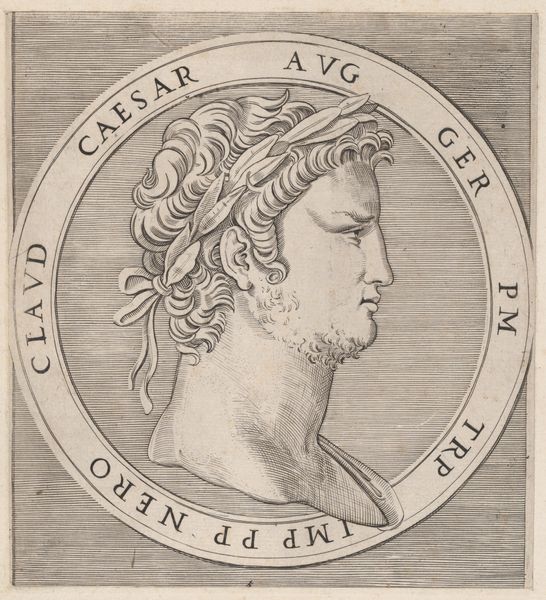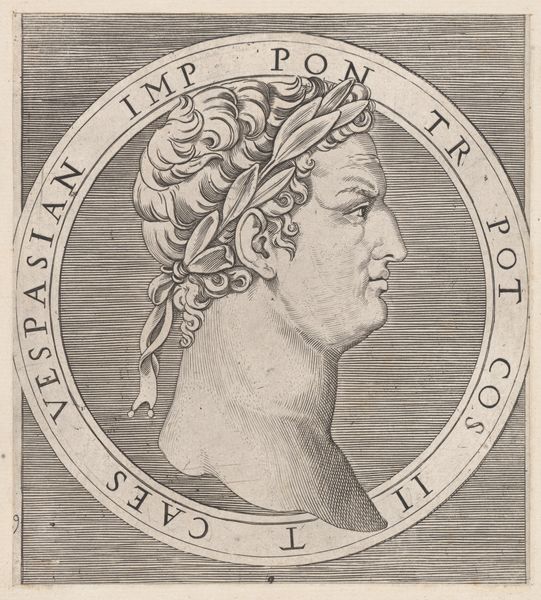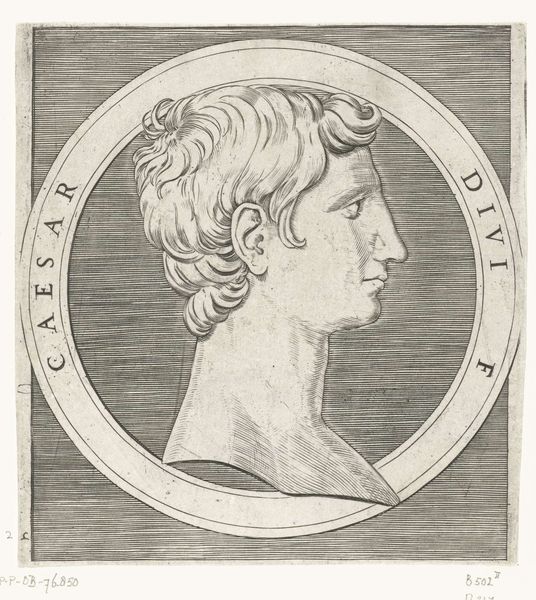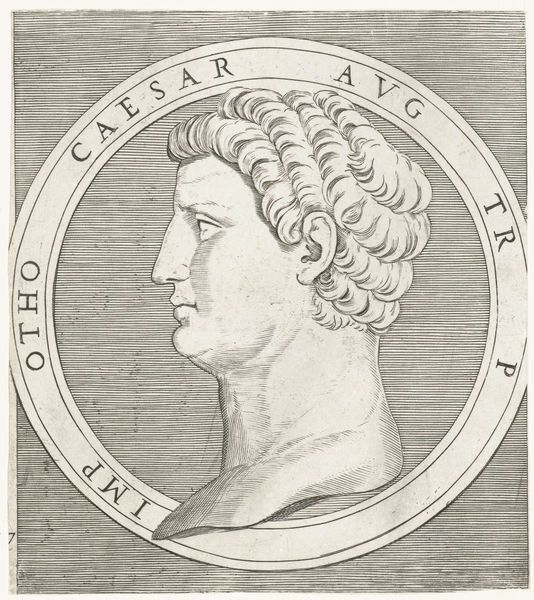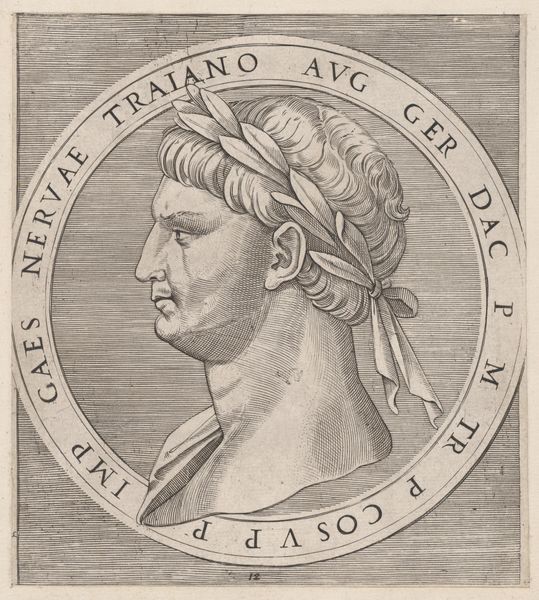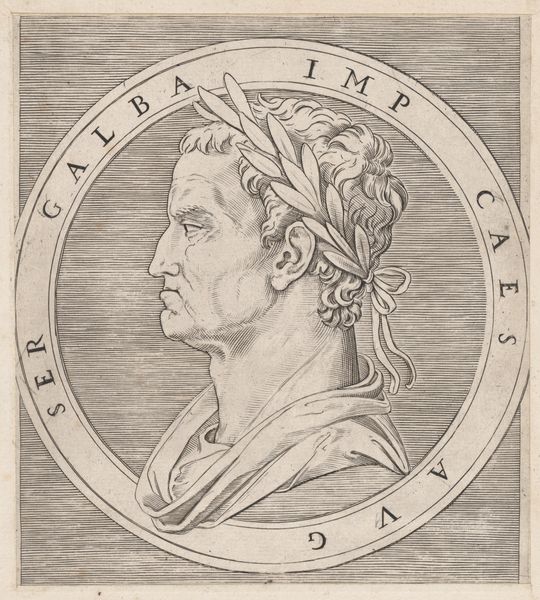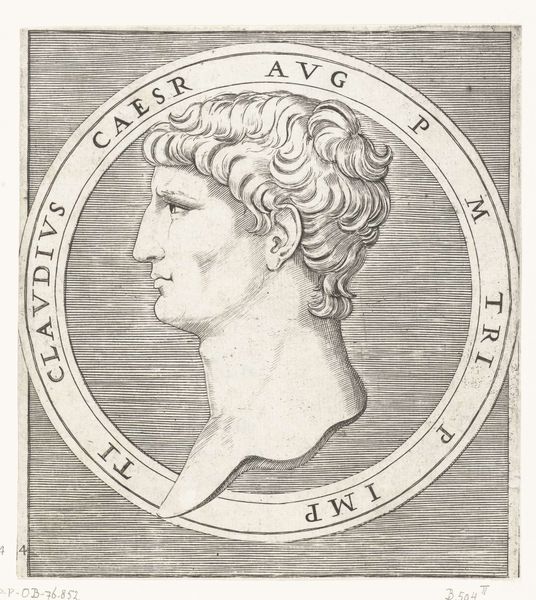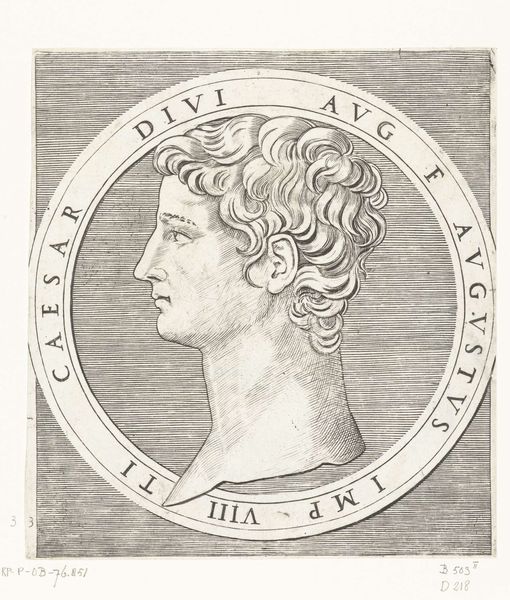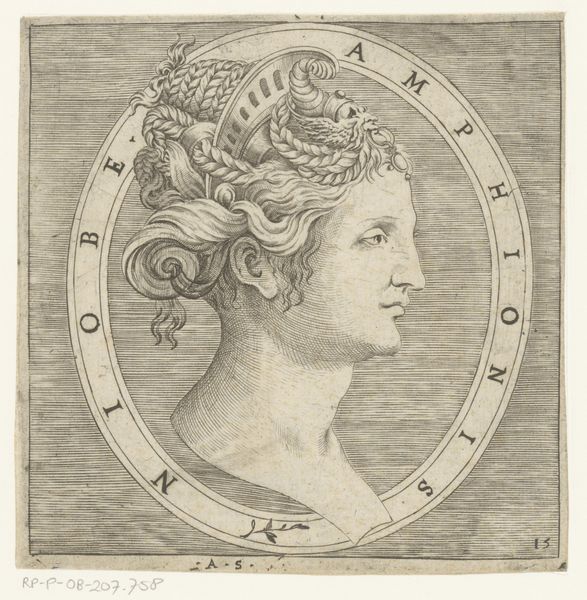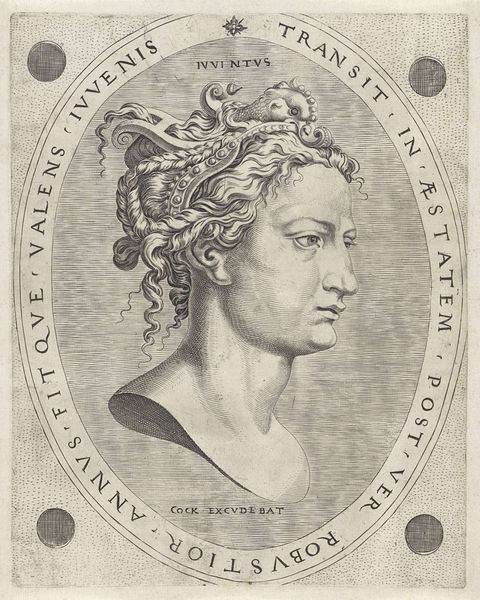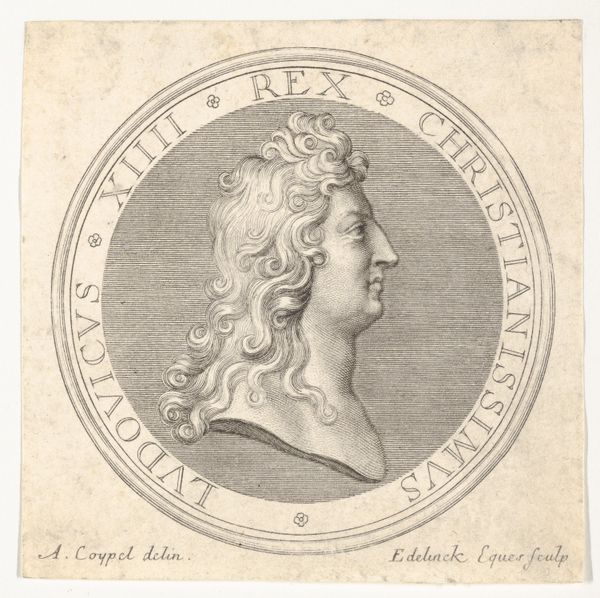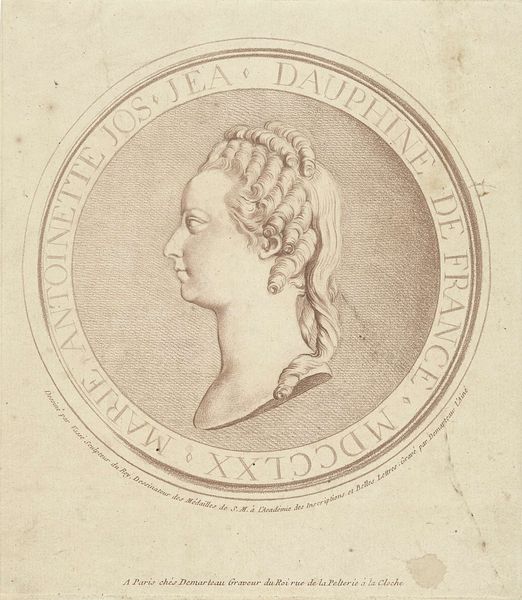
Speculum Romanae Magnificentiae: Otho, from The Twelve Caesars 1495 - 1539
0:00
0:00
drawing, print, engraving
#
portrait
#
drawing
# print
#
caricature
#
ancient-mediterranean
#
portrait drawing
#
history-painting
#
italian-renaissance
#
engraving
#
profile
Dimensions: mount: 7 5/16 x 16 3/4 in. (18.6 x 42.5 cm) sheet: 6 11/16 x 5 7/8 in. (17 x 15 cm)
Copyright: Public Domain
Curator: Immediately striking, wouldn’t you say? So crisp, despite its age. Editor: It's austere. Stripped down. Almost feels like a Roman coin, yet so much larger and finely wrought. What can you tell us about it? Curator: This is "Otho, from The Twelve Caesars" by Marcantonio Raimondi, made sometime between 1495 and 1539. It's an engraving, part of the Speculum Romanae Magnificentiae – a collection that aimed to showcase the grandeur of ancient Rome. Editor: Interesting that a Renaissance artist is already memorializing these rulers through a printed series. The line work is so clean – almost… idealized? Curator: Precisely! Look at the profile. There’s a distinct emphasis on classical forms. Consider the Roman obsession with portraiture, which signaled status and perpetuated the image of power through idealized visages. Editor: And the inscription surrounding the image – very consciously mimicking coins and medals. But isn’t Otho a somewhat surprising choice? He didn't exactly have a glorious or long-lasting reign. Curator: That's an astute point! It highlights that the Speculum series wasn’t necessarily about celebrating virtuous rulers. Instead, it fed a growing appetite for classical knowledge. Editor: So, the point isn’t the character of Otho, but to re-establish continuity. To almost touch antiquity, or claim its authority by displaying accurate and authoritative renderings of Roman figures? It sounds a bit like branding. Curator: An astute analogy, connecting distant visual messages of Roman grandeur and contemporary influence through repeated image. It echoes the concept of *translatio imperii*, which is this sense of passed-down legacy… fascinating. Editor: It really brings forth questions of how historical figures are presented and repurposed throughout history – and why. All things change over time. Thanks for walking me through that. Curator: Indeed, history isn’t static, and this print exemplifies the early modern era's active engagement with classical heritage.
Comments
No comments
Be the first to comment and join the conversation on the ultimate creative platform.
